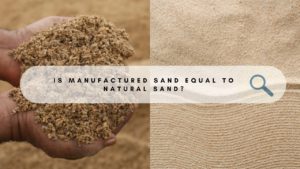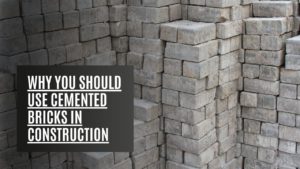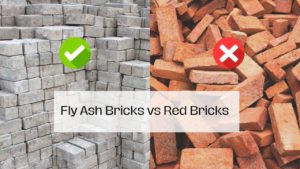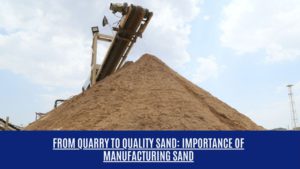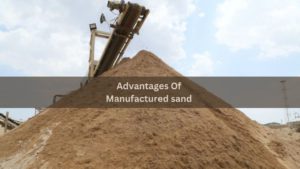Solving the Global Sand Shortage with Manufactured Sand
In today’s world, sand is more than just a component of our beaches and deserts; it is the backbone of modern construction. Surprisingly, sand is the second most consumed natural resource after water. As global population growth and rapid urbanization continue to fuel the construction boom, the demand for natural sand has skyrocketed, leading to a critical shortage. The construction industry, which heavily relies on this vital resource, is now facing the consequences of over-extraction, with environmental degradation and rising costs becoming more apparent. However, there is hope on the horizon in the form of manufactured sand (M-Sand), a sustainable alternative that holds the potential to address the global sand shortage.
Understanding the Global Sand Shortage
The global demand for sand has skyrocketed in recent years, driven by rapid urbanization, infrastructure development, and construction booms worldwide. Sand is a critical component in producing concrete, asphalt, and glass, making it indispensable for building everything from skyscrapers to bridges.
However, this insatiable demand for sand has led to over-exploitation of natural resources. Rivers, beaches, and quarries are being stripped of their sand at an alarming rate, leading to severe environmental consequences. Ecosystems are disrupted, biodiversity is lost, and coastal areas are experiencing increased erosion. Moreover, the economic impact of this shortage is significant, as construction costs rise and project timelines are delayed due to the scarcity of natural sand.
Advantages of M-Sand in Construction
M-Sand, also known as engineered or manufactured sand, is produced by crushing hard rocks into fine particles that resemble natural sand. This process ensures a consistent quality and addresses many of the issues associated with natural sand.
Quality Consistency
One of the key advantages of M-Sand is its consistent grain size and quality. Unlike natural sand, which can vary in composition, M-Sand is manufactured to meet specific requirements. This uniformity results in better workability and ensures that the concrete produced with M-Sand has a higher quality.
Cost-Effectiveness
The manufactured sand price is generally more stable and often lower than that of natural sand. This is because M-Sand can be produced locally, reducing transportation costs. Additionally, the controlled manufacturing process ensures that there are fewer impurities, reducing the need for additional processing.
Enhanced Strength
M-Sand is known for its superior strength properties. It has been found to enhance the strength and durability of concrete, making it a preferred choice for high-strength construction projects. The angular shape of M-Sand particles provides better bonding with cement, leading to stronger and more durable structures.
Environmental Benefits
Using M-Sand in construction significantly reduces the environmental impact associated with natural sand mining. By opting for M-Sand, builders can contribute to preserving riverbeds, protecting coastal areas, and reducing the carbon footprint of their projects.
The Role of M-Sand in Sustainable Construction
In today’s construction industry, there is a growing emphasis on sustainability and green building practices. M-Sand aligns perfectly with these principles, offering a sustainable alternative to natural sand.
Green Building Materials
M-Sand is increasingly recognized as a green building material. It supports the use of sustainable construction materials by reducing the need for natural sand, which is a non-renewable resource. By incorporating M-Sand into their projects, builders can achieve higher ratings in green building certifications.
Certification and Standards
M-Sand has gained acceptance in the industry, with several certifications and standards recognizing its suitability for construction. For instance, the Bureau of Indian Standards (BIS) has set guidelines for the use of M-Sand in concrete production, ensuring that it meets the necessary quality and performance criteria.
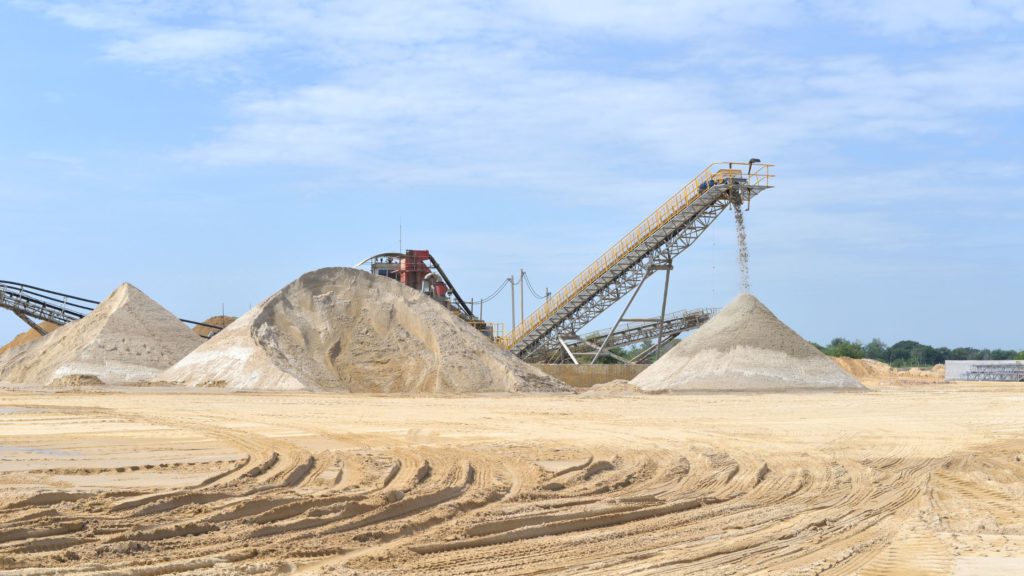
Overcoming Challenges in M-Sand Adoption
Despite its numerous advantages, the adoption of M-Sand in the construction industry is not without challenges. However, these challenges can be overcome with the right approach.
Market Perception
Traditional builders and contractors may be hesitant to switch to M-Sand due to concerns about its performance and availability. However, education and awareness campaigns can help address these concerns. By showcasing successful projects that have used M-Sand, stakeholders can be convinced of its efficacy.
Supply Chain Issues
Producing and distributing M-Sand at scale can be challenging, especially in regions where natural sand is still readily available. However, with the right investment in production facilities and infrastructure, these challenges can be mitigated. Local governments and private companies must collaborate to ensure a reliable supply chain for M-Sand.
Regulatory Support
Government policies and regulations play a crucial role in promoting the use of M-Sand. Incentives for using sustainable construction materials, coupled with restrictions on natural sand mining, can encourage more builders to adopt M-Sand. Regulatory bodies should also ensure that M-Sand meets the required quality standards to build trust among consumers.
The Future of M-Sand in the Construction Industry
The future of M-Sand looks promising, with several factors pointing to its growing importance in the construction industry.
Growth Projections
The market for M-Sand is expected to grow significantly in the coming years. As the global sand shortage worsens, more countries are likely to adopt M-Sand as a solution. This growth will be driven by increased demand for sustainable construction materials and the rising costs of natural sand.
Technological Innovations
Innovations in M-Sand production are likely to enhance its quality and availability. Advanced crushing techniques and screening processes can produce finer and more uniform particles, making M-Sand even more suitable for high-end construction projects. Additionally, research into alternative raw materials for M-Sand production, such as recycled concrete, could further reduce its environmental impact.
Global Impact
M-Sand has the potential to become a key player in addressing the global sand shortage. By reducing the reliance on natural sand, M-Sand can contribute to sustainable development and help preserve our planet’s precious resources. Its adoption on a global scale could mitigate the environmental and economic challenges posed by the sand crisis.
Conclusion
In conclusion, Manufactured Sand (M-Sand) offers a sustainable solution to the global sand shortage. Its consistent quality, cost-effectiveness, and environmental benefits make it an attractive alternative to natural sand in construction. As the construction industry continues to evolve, M-Sand is poised to play a crucial role in promoting sustainable building practices and addressing the pressing challenges of our time.
At Raj Mineral, we are committed to providing high-quality M-Sand that meets industry standards and supports sustainable construction. We encourage builders and contractors to consider the advantages of M-Sand for their projects and join us in our mission to build a greener, more sustainable future.
ALSO READ: Properties and Advantages of M Sand (Manufactured Sand)
Follow us on @rajmineral





